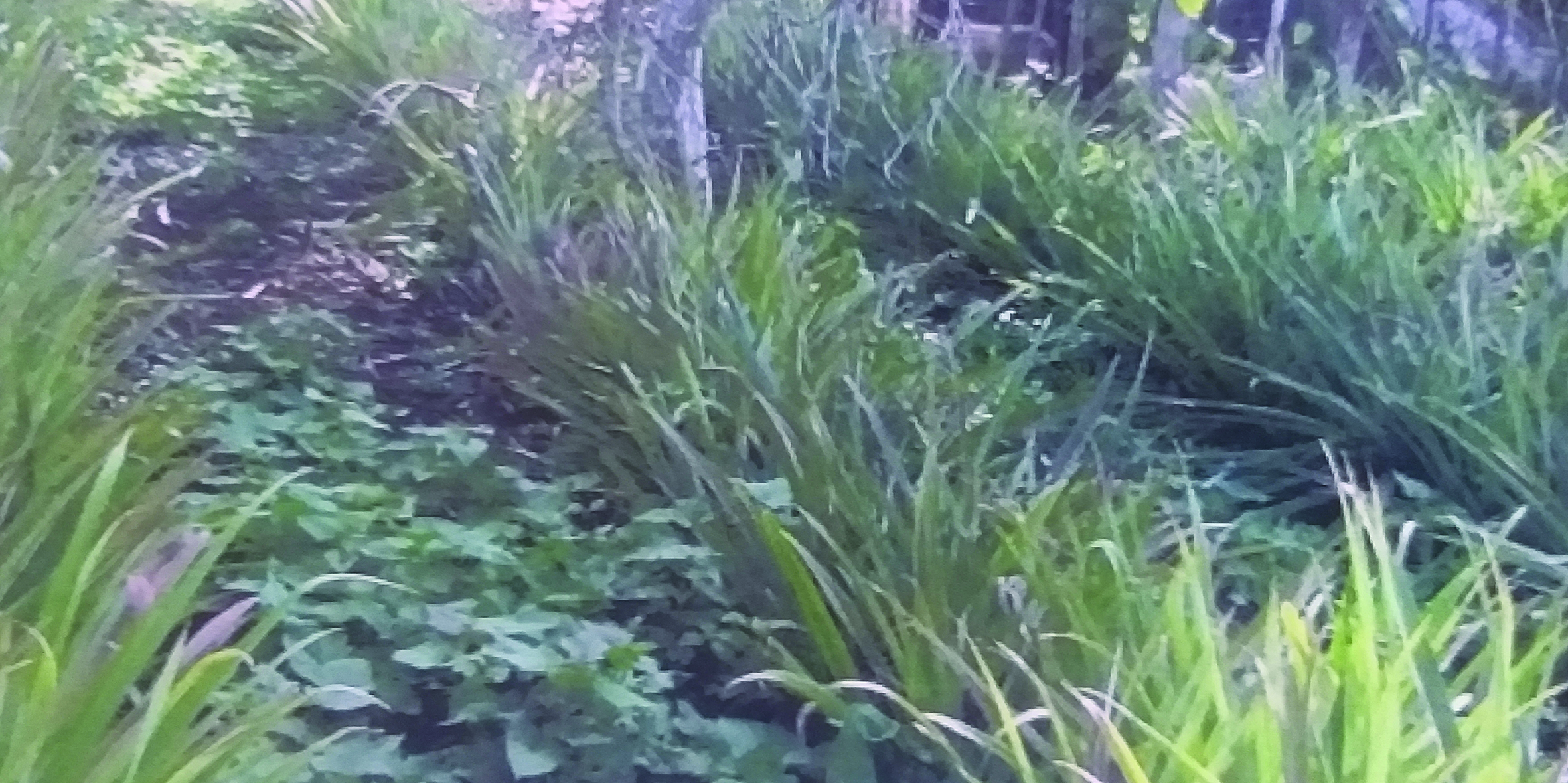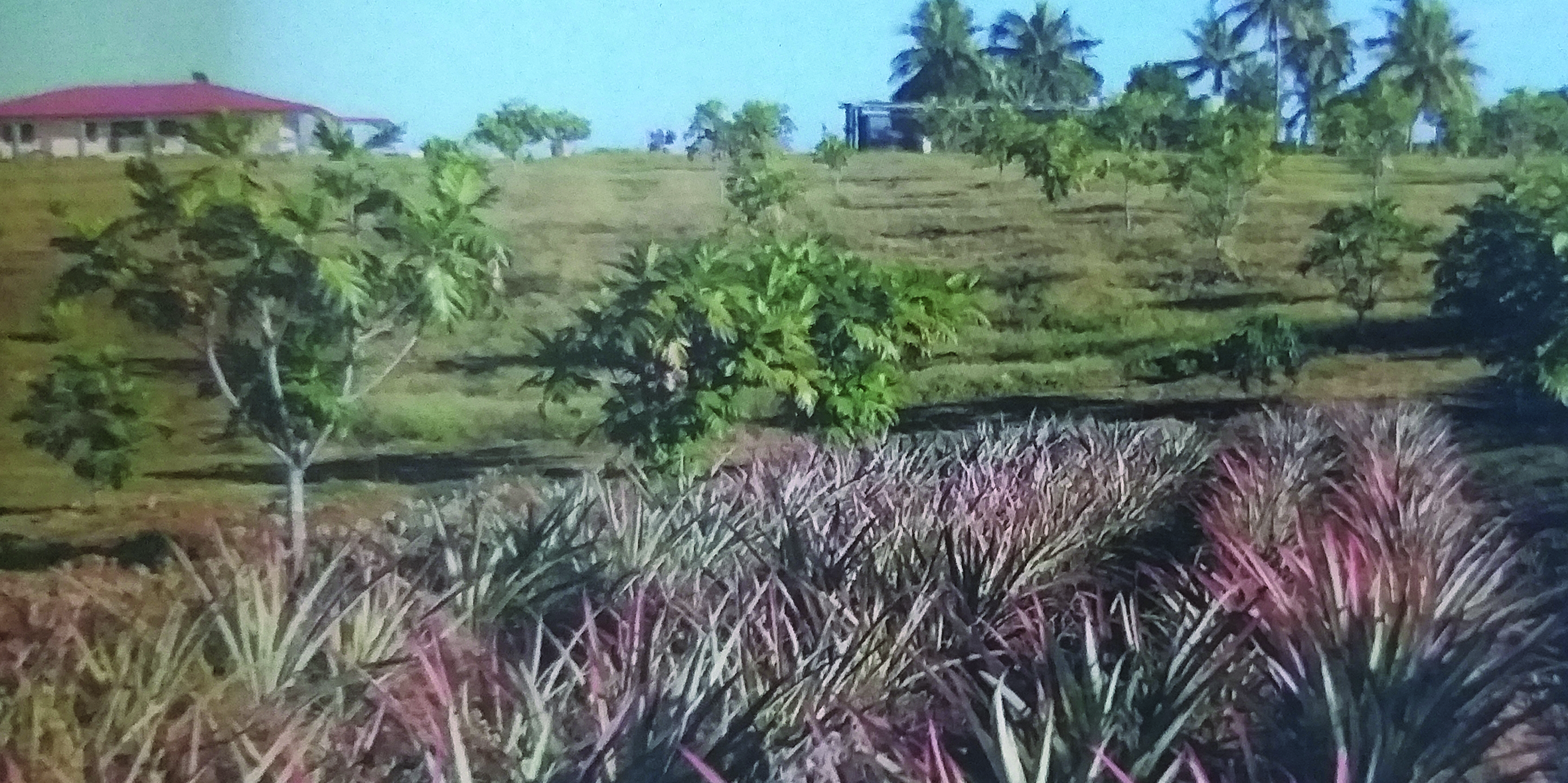b l o g
f e b r u a r y 2 0 2 1

The possibility of temporary flooding during heavy rain is real in cases of flat land with very little slope
By Aad Van Santen, Lead Author of Pineapple Production In Vanuatu
Cropping systems in pineapple farming can be divided in 3 major categories:
(1) Sole Cropping: pineapple grown as the single crop in the field
(2) Integrated Vegetable Cropping: pineapple grown with other vegetable crops in between as an intercrop
(3) Perennial Integrated Cropping: Pineapple grown as an intercrop in between long term plantings, mostly orchards
Soil Cropping
In Sole Cropping entire fields are continuously planted with pineapple, allowing only space for access roads of tractor/truck and cross escape tracks in continuous blocks for ease of harvest and crop maintenance.
This system should allow for uniform field lay-out and planting, with an ideal shape of the cleared field that fits multiple units that can accommodate 1000 plants. This technical session uses example dimensions of 12m x 15.5m per unit of 1000 plants, allowing for 8 double rows (beds) of 125 plants/double row. (These dimensions have been found to be most practical in crop maintenance, spraying and harvesting, but alternative dimensions of units of 1000 plants can be used.) If field space does not allow this size width, partial size of these blocks can be used, like ¼ X, ½ X etc
As much as possible harmonization in “unit” size allowing easy division or multiplication in units of 1000 serves for easy adaptation of advices on fertilization and other husbandry practices that are based on units of 1000 plants or blocks of 10,000 plants. In any layout, the space between centers of beds should be between 1.4m and 1.5 m.
Each of the units is started by marking the center of the first bed with the help of simple pegs (sticks) in the middle of the planned double row planted beds. The next parallel beds are marked by measuring with a prepared measure stick of 1.4 to 1.5 meter from all the previous marking pegs in the first bed at perpendicular angles.
The number of beds per unit depends on the space over the width of the block and could vary from 4 beds for the half size unit to 8 beds in full planted units. Wider than 8 beds is not generally recommended in view of ease of field operations (run in field at harvest, spray applications). On level fields the beds are preferably made flat with the rest of the field, this will make work in the blocks easier and less chance of lodging (falling over of plants) especially in ratoon crops. However on steeper slopes where contours are to be followed, ridges are advised to avoid “sheet erosion.”
In cases of flat land with very little slope the possibility of temporary flooding during heavy rain is real. For this reason extra care is given for long beds (200 meters). In these cases the orientation of beds is to be chosen along the maximum slope direction and additional attention given to preparing raised beds with good drainage, and if necessary deep ripping of the beds.
In larger pineapple farms with wide blocks it is important to leave a space for field roads. For farms using tractor cultivation the field roads should be between 3 to 4 meters broad and at the corners of the blocks a number of plants removed to allow for a turning point.
At the beginning and end of a length of blocks space is to be left for a cross road to allow tractor and equipment to enter and leave the field roads, without the necessity to cross other planted patches or fences.
If planted on steeper slopes, the contour lines of the slope are to be followed and ridges are to be used instead of planting in the flat on level fields.
In principle, the same measurements and spacing is used as in level field planting, but the parallel beds are not in straight lines, but follow the marked out contour lines as set-out in the contour survey with an A-frame.
It has to be realized, that especially on steeper slopes the contour lines are not always exact parallel over the entire width of a sloping field.
As such beds following the contour lines can be at places shorter and cut off.
Steeper slope units might have a different number of beds in the lay-out, because same level (contour) can be less at spaces along the slope width.
Integrated Vegetable Cropping
There are two basic approaches for intercropping pineapple with vegetables, these include:
(1) Mono crop of pineapple with vegetables as a temporary intercrop –
In this system pineapple is planted as a sole crop, but a short term vegetable is used as an intercrop to provide soil cover during the early development period of the pineapple. Since pineapple is a slow developing crop, the first six to nine months provide a space between the planted lines that is bare and exposed to the weather elements.
The intercrop in this system provides a farmer with some income, while the slow growing pineapples are being established.
To protect the top soil from erosion effect, as well as to obtain some earlier farm income, a fast growing soil covering crop is selected, that does not take more than 6 months to produce a yield and provides fast soil cover, and a reasonable returning income.
This cropping system requires a slightly different planting lay-out, where more space between pineapple beds is required to minimize competition between the two crops. This system also requires an additional supply of nutrients, organic or synthetic, to supply the requirements of the intercrop. This nutrient supply is generally applied to the soil as a pre-plant application.
The farmer must be careful when using a “creeping” vegetable intercrop in this system to ensure the young pineapple plants are not smothered, the growth of the creeping vegetable must be directed down the center of the row.
Vegetable crops that are hosts to similar pineapple pests and diseases are to be avoided, these include: tomatoes, chili pepper, capsicum and eggplant, which are all hosts and sensitive to the same nematode species as pineapple.
Some vegetable crops that fit well into this system include: sweet potatoes (kumala), long beans, watermelon, peanut, corn, and cucumber. The key to remember is that these crops must be short term and not provide too much shading for the pineapple.

Pineapple can be successfully intercropped with many vegetable crops like sweet potato and papaya as seen above
(2) Pineapple cropped in alternate strips with vegetables –
In this system pineapple is still the primary crop however there are alternate bare strips between the pineapple rows to allow periodical crop rotations with vegetables.
This system uses a number of cultivated strips of similar width, alternatively planted with pineapple and other vegetable crops. The width of the strips can vary according to the farmers need, but a general width that can accommodate 3 lines of pineapple is advised.
After a complete pineapple cropping cycle of one plant crop and 2 ratoon crops, a farm can rotate his pineapple to the ‘vegetable strip’ and begin intercropping vegetables on the previous pineapple bed.
As an example, this system can have three lines of pineapple planted at a spacing between lines of approx. 40cm and 25 cm spacing in line, with a strip/bed width of 2 meters to allow for access on both sides. The next strip/bed of 2 meters wide is now used for planting alternative vegetable crops, in this case not necessarily only creeping crops, but also erect crops such as cassava. As a rotational crop, cassava would also assist to reduce nematode populations.
Perennial Integrated Cropping
Pineapple can be successfully grown as an intercrop with a range of tree species including citrus, papaya, breadfruit, mango and coffee. In an orchard system, particularly during the establishment phase, pineapple is seen as a highly suitable intercrop that allows the farmer to utilize the wide space between young trees crops.
Experience with inter cropping of pineapple in coconut plantations has been less successful, mainly because the strong tendency of palm tree to develop roots close to the surface oil, which in turn causes heavy competition with the shallow rooted pineapple.

In an orchard system, the space in between the tree lines can be alternatively planted with pineapple, leaving every other space between tree lines open for access to maintain and harvest trees and pineapple. Over the width between the lines of the fruit trees, depending on the spacing of tree lines (often 9-12m), a number of beds with double line pineapple can be planted. Leaving at least 1 meter from the tree line on both sides of the inter space strip, 7 to 10 meter is left for pineapple beds.
Two example lay-outs are presented below:
(1) Planting on flat land, where no contour drains are needed, al spacing between trees can be used for pineapple beds, allowing 1m beside tree lines for the trees. This lay-out allows for 2 strips between trees to be planted with beds of pineapple and trees on both sides.
(2) Planting on sloping land with surface drains for erosion control. This layout allows for at least 1m space all around the base of the tree, and then approximately 1m width for a surface contour drain on the lower side of the slope in between the tree rows, which leaves the rest of the space for pineapple, on the contour lines.
Erosion control on the farm
Soil erosion is a major concern for all farmers working on sloping land and steps need to be taken to address this concern before planting.
Soil loss due to erosion and surface runoff have become severe worldwide problems that all farmers must be aware of. The problem may become so severe that the land can no longer be cultivated and must be abandoned. Many agricultural civilizations have collapsed due to land and natural resource mismanagement, and the history of such civilizations should be urgent reminders to present farmers to truly protect our natural resources.
Controlling erosion on the farm is not just about protecting your land and environment, erosion actually costs farmers money. Estimates on yield losses indicate that even mild erosion on a field can reduce the yield on that field by 20%.
There are several different types of soil erosion that a farmer should be aware of including:
(1) Wind erosion – This usually occurs on loose (often sandy or light loamy soil) and bare, dry land, when strong and hot dry winds blow over the area. This is often highly visible as huge dust clouds, well known in desert areas. Although this can be a problem in Vanuatu, water erosion is generally much more significant in our tropical regions.
(2) Water sheet erosion – This type of erosion is almost invisible, but on uniform, slightly sloping planes of land at each heavy rain a thin layer of the top soil is washed away. This happens on land that is for the most part bare during the rains. Lighter colored soils are a sign that over time water sheet erosion may have occurred.
(3) Gully erosion – This type of erosion occurs during periods of heavy rainfall on sloping lands and when the flow of water is not controlled. In gully erosion, the force of the water over bare soil creates small rivers which carry large volumes of valuable soil away from the farm. This type of erosion is the most common and most destructive that farmers in Vanuatu will experience.
How does erosion work?
Soil erosion by water occurs when bare soil on sloping lands is exposed to rainfall and the rainfall intensity is heavier than the infiltration rate (this means the water hitting the soil is more than the soil can absorb at one time, leading to soil surface runoff).
In many natural ecosystems, each raindrop is obstructed by a plant before it hits the ground, where it is then quickly absorbed.
In problem areas where there’s no ground cover, raindrops pound the ground and break up the soil, then wash it away. So soil erosion occurs in two steps, which is loosening of soil particles by raindrop impact/splash, and moving away of detached particles by flowing water.
Different approaches to control erosion
Fortunately, there are some proven strategies to reduce erosion, however it’s almost impossible to completely stop erosion – water and wind move soil and that’s all there is to it.
Soil conservation practices that can improve the water infiltration route of soil, resulting in less surface runoff, can reduce soil erosion. Also making sure that no bare soil is exposed to the environment and rain will improve the protection against erosion. Having the soil covered by plants, crops or mulches is an important step to minimize erosion.
Another strategy to reduce soil erosion is to improve the soil structure/condition, which will improve the rate of infiltration. The main way to improve soil structure/condition is through incorporation of more organic matter.
Argonomic, cultivation, or structural practices are available for controlling soil erosion.
All these practices are not mutually exclusive. Some situations may require both management and structural changes in other situations, erosion control can be achieved by implementing a single practice, where the erosion is minimal, such as the establishment of grass waterways.
Argonomic practices to control erosion include choice of crops and plants to cultivate; deep routing tree crops will have strong influence on erosion sensitivity, because of the large and deep reaching “network” of the tree roots. This of course is more effective with older trees, and newly planted tree crops themselves will need some erosion control in the first few years.
Another argonomic practice is to live strips of uncultivated land between cultivated strips of land along sloping areas, assuring that deep rooted bush growth and trees are allowed to grow.
Below are some suggestions for farmers to help minimise the impact of erosion on the farm:
(1) The most effective way to control erosion is to maintain a permanent surface cover on the soil surface, such as pasture, or meadow.
(2) Choice of crop – shallow rooted crops should be avoided or intercropped with deep rooting crops.
(3) Planting along the contour lines of the sloping field, in combination with structural practices of down slope drains with “water force reducing” structures
(4) Plant selected trees or shrubs at intervals along the contour between the crop fields over the entire width of the planted slope.
(5) Use mulching in between planted lines.
Structural practices involve physical changes in the shape and topography of the land. These include:
(1) Erecting stone walls at intervals along the contour of the slope Depending on steepness of the slope thesestone walls constructed every 10 to 20 meters can reduce the force of downslope water significantly.
(2) Construct terraces and strips along steep slope contours. Care must be taken that terraces are not made to wide, otherwise the upper slope will be be depleted of good soil, while the terrace is leveled off.
(3) Dig header drains above the cultivated field to control down flowing water from the upper hill areas above the field and present additional water flow on the cultivated field.
(4) Dig down slope drains, in a “step-wise” was plan to control the flow of excess water controlled in contour drains. These down slope drains should reach to the level of natural waterways.
(5) Construct “water force” reducing structures in the down slope drains. This will slow the flow of water, reducing the amount of soil being carried away.
Final Pineapple Production Technical Session: Planting Pineapple
